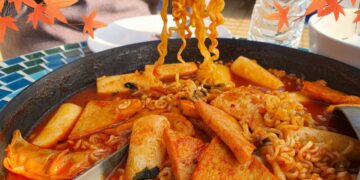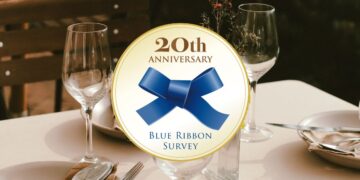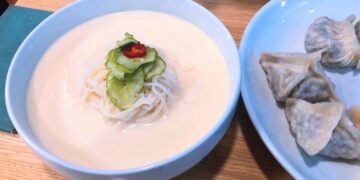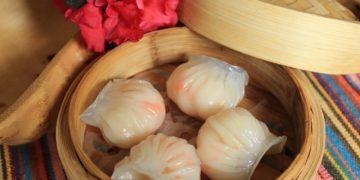Discover milmyeon, Busan’s signature summer noodle dish. Born during the Korean War, it’s now a must-try food, defining the city’s culinary identity.
When the summer heat lingers over Busan, Korea’s bustling seaside city, locals and travelers alike search for something cool, refreshing, and deeply satisfying. For generations, that something has been milmyeon (밀면) — a cold noodle dish that is more than just food. It’s a story of hardship, adaptation, and resilience that has transformed into a culinary symbol of Busan’s identity.
A Dish Born Out of Necessity
The roots of milmyeon trace back to one of Korea’s most difficult periods: the Korean War (1950–1953). During the war, Busan became a refuge for hundreds of thousands of displaced people, particularly those from North Korea. Many of these refugees longed for the taste of naengmyeon, the cold buckwheat noodle dish popular in their hometowns of Pyongyang and Hamhung.
But buckwheat was scarce in war-torn Korea. Instead, wheat flour, imported through American food aid, was far more accessible. Refugees adapted, using wheat to recreate the dish they missed so dearly. Thus, milmyeon was born, its name meaning “wheat noodles.”
What started as an improvised substitute soon took on a life of its own. In Busan, milmyeon became not just a dish of survival, but a food that locals embraced wholeheartedly, giving it a distinct place in the city’s food culture.
What Makes Milmyeon Unique?
At first glance, milmyeon resembles its northern cousin, naengmyeon. Both are served icy cold, often in stainless steel bowls that help retain the chill. Both are topped with crunchy vegetables, pickled radish, slices of boiled egg, and sometimes beef or pork.
But look closer, and the differences are apparent:
- The Noodles: Made from wheat flour mixed with starches like sweet potato or potato, milmyeon noodles are softer and chewier compared to the denser buckwheat noodles of naengmyeon.
- The Broth & Sauce: Milmyeon broth tends to be slightly bolder, made with beef or chicken stock, and the spicy bibim version leans towards tangier flavors, aligning with Busan’s preference for punchy, robust tastes.
- The Flavor Profile: Where Pyongyang-style naengmyeon is delicate and subtle, milmyeon bursts with a heartier, fuller taste, making it instantly satisfying, especially in summer heat.
Two Ways to Enjoy Milmyeon
One of the joys of milmyeon is that you can enjoy it in two distinct styles:
Mul Milmyeon (물밀면)
Served in a chilled meat broth, this version is clean, refreshing, and deeply hydrating, ideal for cooling down after a day of exploring Busan’s markets or beaches.
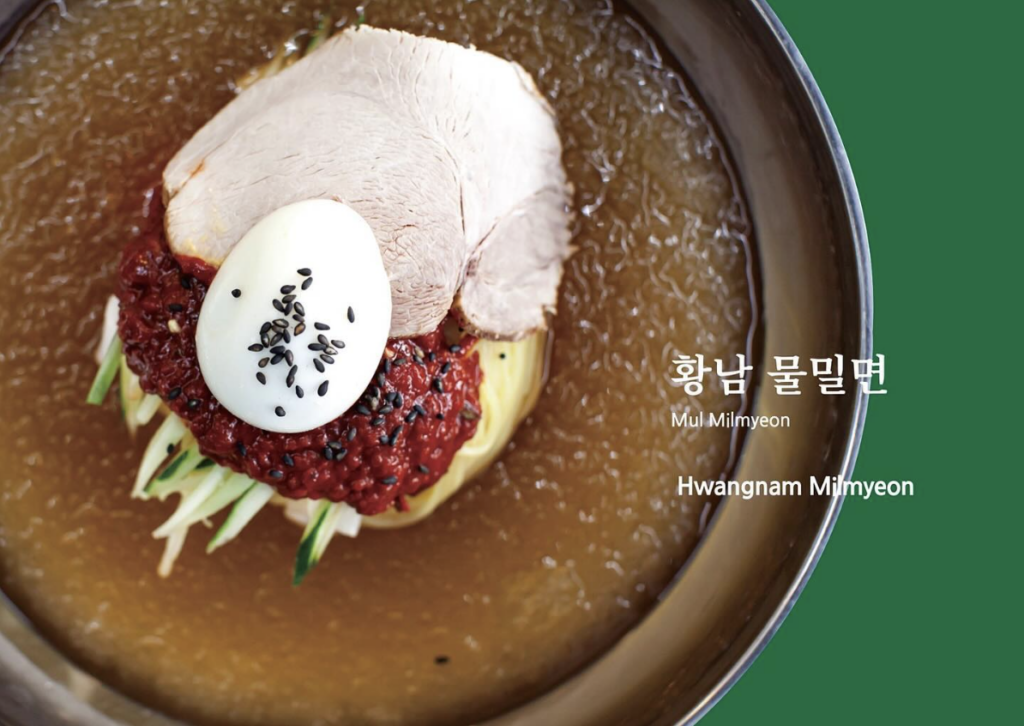
Bibim Milmyeon (비빔밀면)
Tossed in a spicy-sweet red chili paste sauce (gochujang-based), bibim milmyeon packs more punch. The sauce clings to the noodles, coating each bite with layers of heat and tang.
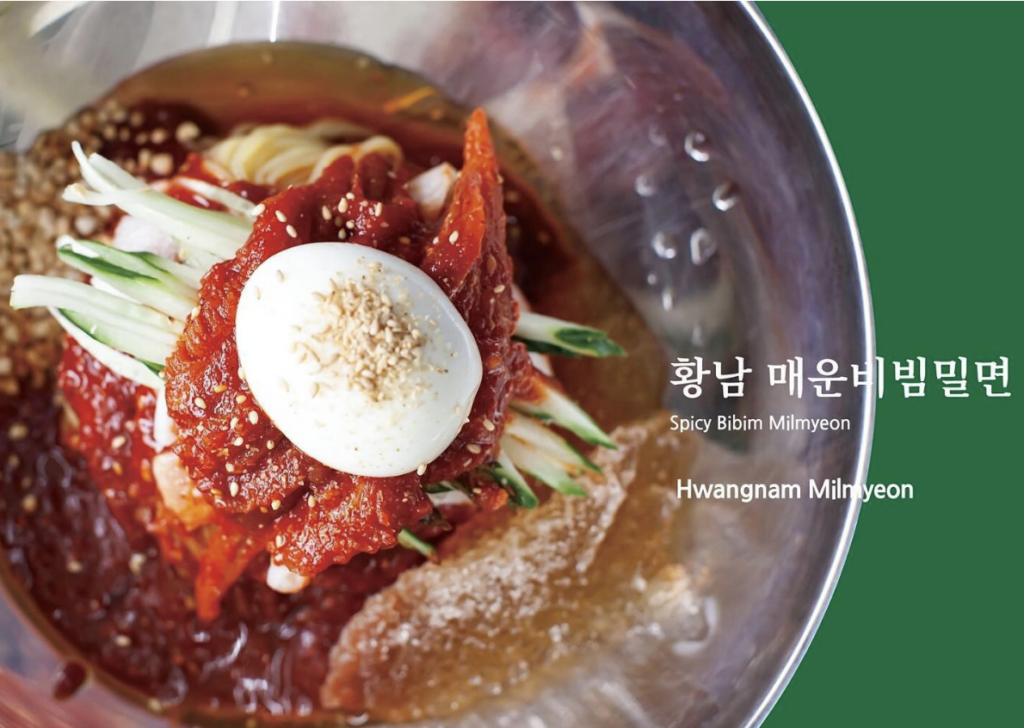
Both styles come with familiar toppings, crisp cucumbers, tangy pickled radish, a slice of boiled egg, and sometimes a bit of meat. Diners often add a splash of vinegar or mustard for extra sharpness, adjusting the flavor to personal taste.
Milmyeon and Busan’s Culinary Identity
Busan is known for its seafood, street snacks, and lively markets, but no dish feels more “Busan” than milmyeon. It represents the city’s ability to adapt, survive, and create something lasting from difficult times.
For locals, eating milmyeon is as much about comfort and nostalgia as it is about refreshment. Families often have their “go-to” milmyeon restaurant, and for many Busan natives, summer doesn’t officially start until they’ve sat down for their first cold bowl of the season.
For visitors, trying milmyeon isn’t just about taste, it’s about connecting with a living piece of history that speaks to Busan’s unique story within Korea.
Where to Try Milmyeon in Busan
Today, Busan boasts countless restaurants dedicated to milmyeon, ranging from humble neighborhood eateries to renowned establishments that have been serving for decades. While each restaurant has its own secret broth recipe or noodle-making technique, the heart of the dish remains the same: cooling, comforting, and distinctly Busan. Each offers a slightly different experience, making it worth sampling more than one during your stay in Busan.
A few iconic spots often mentioned by locals include:
Naeho Naengmyeon (내호냉면)
Often cited as the birthplace of milmyeon, this restaurant carries the legacy of the original refugee creation.
Gukje Milmyeon (국제밀면)
Known for generous portions and a broth that perfectly balances savory and sweet.
Daegamyeonok (대가면옥)
Celebrated for its spicy bibim version, popular with younger locals who love a kick.
Sacheol Milmyeon (사철밀면)
A long-standing favorite that prides itself on preserving traditional methods.
Milmyeon vs. Naengmyeon: A Tale of Two Noodles
While both dishes fall under the category of Korean cold noodles, their cultural significance differs.
- Naengmyeon: Originates from the northern regions of Korea, especially Pyongyang and Hamhung. Traditionally a winter food, naengmyeon is subtle, austere, and reflective of northern cuisine.
- Milmyeon: Born in the south out of wartime necessity, it’s bold, refreshing, and forever tied to Busan’s identity.
For travelers, tasting both provides not just a culinary comparison, but also a deeper understanding of Korea’s divided history and how food bridges memory, migration, and place.
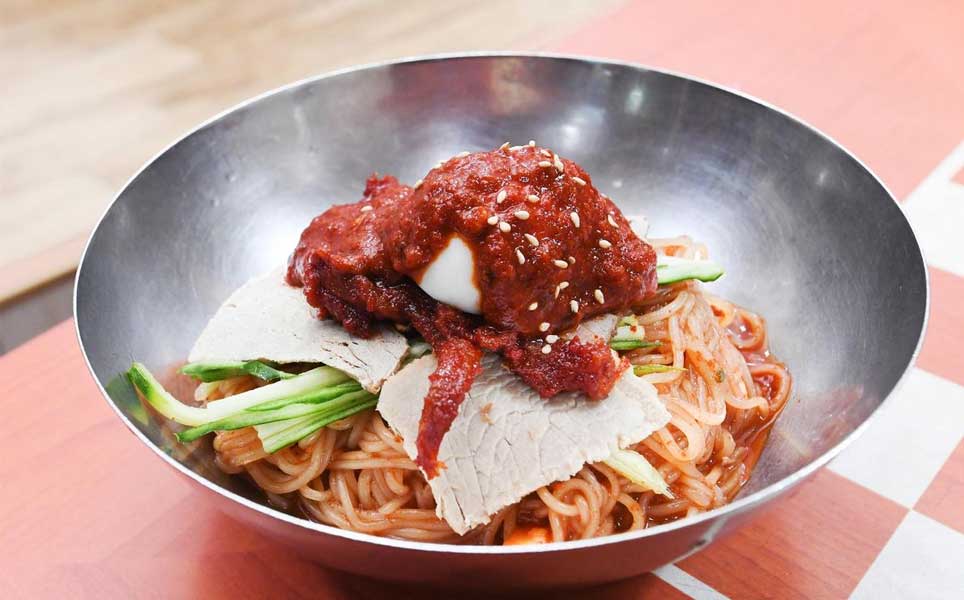
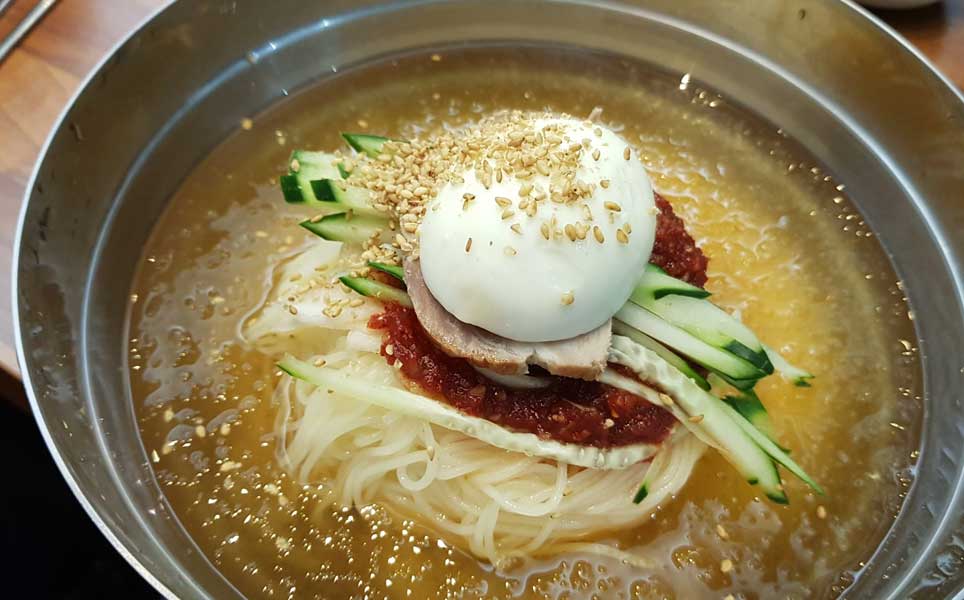
Tips for Travelers
If you’re planning to try milmyeon in Busan, here are a few insider tips:
- Timing: Milmyeon is best enjoyed in summer, when its icy broth feels most refreshing. But many restaurants serve it year-round.
- Ordering: Don’t be shy about asking for extra vinegar (sikcho) or mustard (gyeoja). Locals often customize their bowls this way.
- Side Dishes: Most places serve simple kimchi or pickled radish on the side, complementing the noodles perfectly.
- Price Point: Milmyeon is affordable, usually ranging from ₩7,000–₩10,000 per bowl, making it a budget-friendly choice for travelers.
- Pair It: Some restaurants offer dumplings (mandu) as a side dish, a perfect pairing with your cold noodles.
Why Milmyeon Belongs on Every Traveler’s Itinerary
Food in Korea is more than nourishment, it’s a reflection of history, identity, and community. Milmyeon embodies all of these elements. It tells the story of refugees who turned scarcity into innovation, of a city that embraced those flavors, and of a dish that continues to define Busan’s summers.
When you sit down to a bowl of milmyeon, you’re not just cooling off from the heat. You’re tasting resilience, adaptation, and the enduring spirit of Busan itself.
So next time you’re wandering through Korea’s southern port city, make sure to seek out this humble yet iconic dish. Whether you prefer the clean comfort of mul milmyeon or the fiery kick of bibim milmyeon, one thing is certain: Busan’s summer just wouldn’t be the same without it.
Related Posts
1,487 total views, 2 views today


